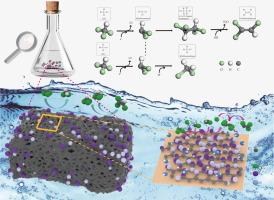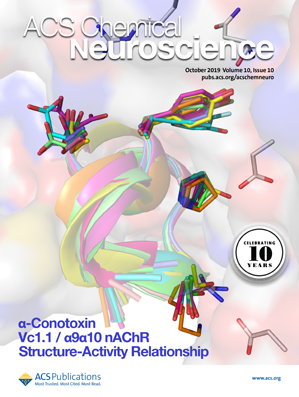The investigation of highly efficient chlorinated hydrocarbons removal based on metal nanoparticles carbonaceous synthetic particles: The degradation behavior and selective transformation mechanism
IF 4.1
3区 医学
Q2 BIOCHEMISTRY & MOLECULAR BIOLOGY
引用次数: 0
Abstract
Overconsumption in industrial manufacturing has led to critical emissions of chloroalkanes, posing a significant environmental threat. In this study, the innovative biochar (BC) particles containing nanocrystalline: NZVI, Fe/Pd, Fe/Ni were prepared by impregnation-liquid phase reduction using the pyrolysis of coconut husk as precursors to explore the degradation capabilities of chloroform (CF) via orthogonal experiment. The results indicated that when the pH value was 3, the temperature was 20 ℃, and the reaction time was 60 min, the CF removal efficiency of Fe/Ni-BC reached 80.38 ± 2.08 %, outperforming all other tested synthetic particles. Advanced characterization techniques showed that the abundant dispersed metallic nanoparticle sites would refresh the surface crystal morphology, improve the adsorption enrichment ability of biochar, enhance electron transfer capacity of synthetic particles, and further participate in reductive dechlorination by inducing an electrophilic attack of active hydrogen. Theoretical calculations verified that hydrogen activation and CF facile adsorption would be easily achieved after the introduction of metal nanoparticles, profiting from the multiple synergistic effects between special π-delocalized bond of biochar in carbon layer and multiple nanoparticles docking sites, and thus enhancing the specific CF catalytic selectivity of Fe/Ni as the active center. Collectively, the CF degradation on Fe/Ni-BC was a complex chemisorption process along with reductive hydrogenation decomposition, which achieved the parent CF reduction and promoted the conversion of the low-chlorinated benign products. These findings offer new insights into the developed multifunctional BC and their comprehensive assessment of CF sewage remediation.

基于金属纳米碳质合成颗粒的高效氯化烃去除研究:降解行为与选择性转化机理
工业生产中的过度消耗导致氯烷的大量排放,对环境造成了严重威胁。本研究采用浸渍-液相法制备了含有纳米晶的创新生物炭(BC)颗粒:NZVI、Fe/Pd、Fe/Ni)的创新生物炭(BC)颗粒,通过正交实验探索其对氯仿(CF)的降解能力。结果表明,当pH值为3、温度为20 ℃、反应时间为60 min时,Fe/Ni-BC的CF去除率达到80.38 ± 2.08 %,优于其他所有测试的合成颗粒。先进的表征技术表明,丰富的分散金属纳米粒子位点会刷新表面晶体形态,提高生物炭的吸附富集能力,增强合成颗粒的电子传递能力,并通过诱导活性氢的亲电攻击进一步参与还原脱氯。理论计算证实,引入金属纳米颗粒后,由于碳层中生物炭特殊的π-定位键与多个纳米颗粒对接位点之间的多重协同效应,很容易实现氢的活化和CF的便捷吸附,从而提高了以Fe/Ni为活性中心的特定CF催化选择性。总之,Fe/Ni-BC 上的 CF 降解是一个复杂的化学吸附过程,同时伴有还原加氢分解,从而实现了母体 CF 的还原,并促进了低氯化良性产物的转化。这些发现为所开发的多功能 BC 及其对 CF 污水修复的综合评估提供了新的见解。
本文章由计算机程序翻译,如有差异,请以英文原文为准。
求助全文
约1分钟内获得全文
求助全文
来源期刊

ACS Chemical Neuroscience
BIOCHEMISTRY & MOLECULAR BIOLOGY-CHEMISTRY, MEDICINAL
CiteScore
9.20
自引率
4.00%
发文量
323
审稿时长
1 months
期刊介绍:
ACS Chemical Neuroscience publishes high-quality research articles and reviews that showcase chemical, quantitative biological, biophysical and bioengineering approaches to the understanding of the nervous system and to the development of new treatments for neurological disorders. Research in the journal focuses on aspects of chemical neurobiology and bio-neurochemistry such as the following:
Neurotransmitters and receptors
Neuropharmaceuticals and therapeutics
Neural development—Plasticity, and degeneration
Chemical, physical, and computational methods in neuroscience
Neuronal diseases—basis, detection, and treatment
Mechanism of aging, learning, memory and behavior
Pain and sensory processing
Neurotoxins
Neuroscience-inspired bioengineering
Development of methods in chemical neurobiology
Neuroimaging agents and technologies
Animal models for central nervous system diseases
Behavioral research
 求助内容:
求助内容: 应助结果提醒方式:
应助结果提醒方式:


